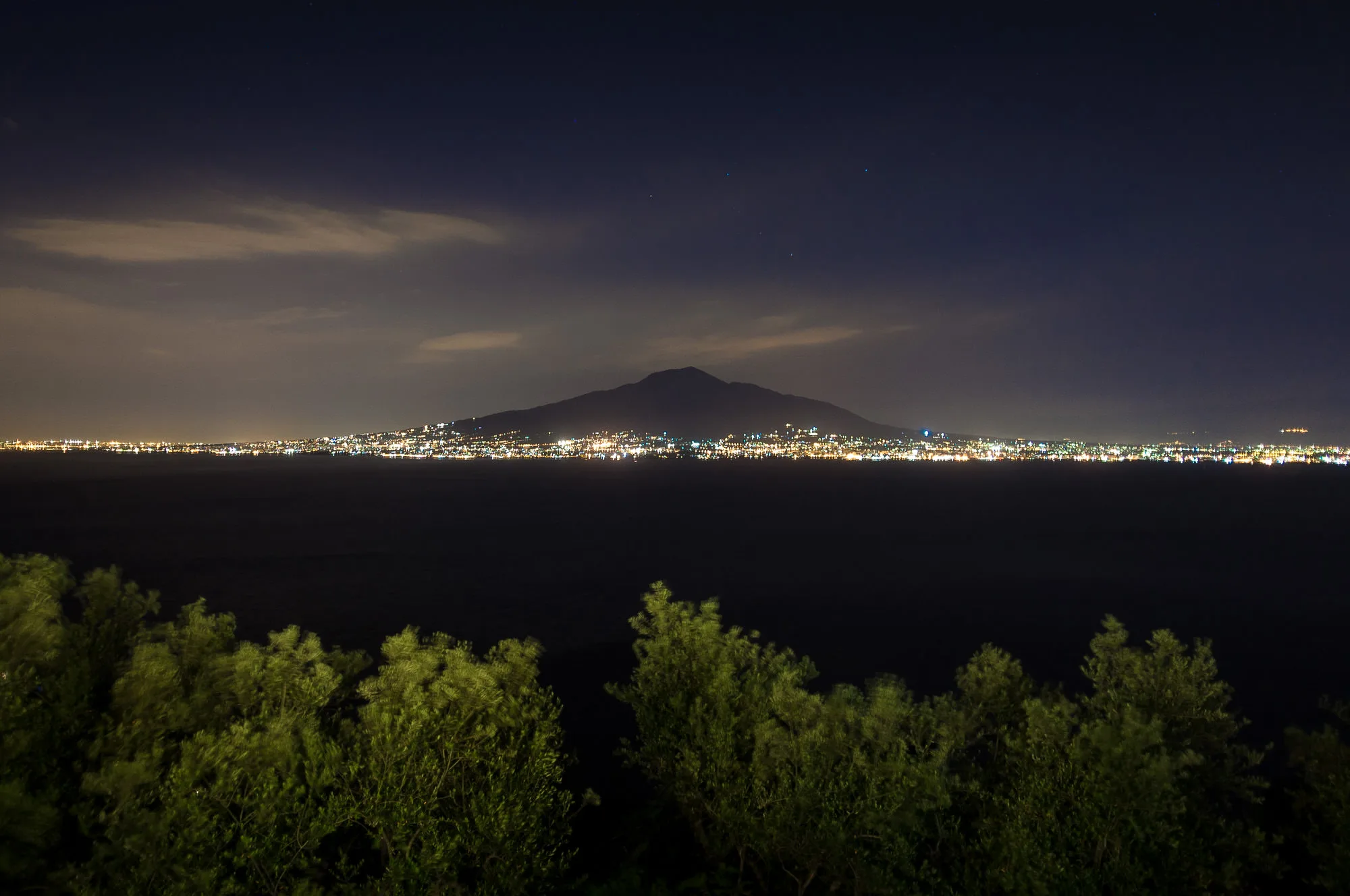The centre of attention for visitors to the Bay of Naples is a dormant volcano. Standing massive above the plains containing Naples, Ercolano (Herculaneum) and Pompeii, it constantly draws the eye. As a photographer, it’s pretty difficult to avoid having it as a main element in any wider landscape photo in the region.


Its destructive history – most recently an eruption in 1944 and a false alarm in the mid-1980s – constantly plays on the mind. It’s difficult not to think of the repercussions of an eruption on the surrounding region – over three million people live around the mountain. Emergency plans drawn up to ensure timely evacuation indicate that it would take up to seven days to move everybody to safety.
The highly stringent monitoring of the mountain indicates that there is no immediate prospect of an eruption, so we took the opportunity of a rental car this summer to visit the summit. A funicular was built in the latter part of the 19th century, but it was destroyed by the 1944 eruption – remains, including the cables, are still plainly visible. Nowadays, the easiest way to reach the summit is via a 7-odd kilometre road from Ercolano. Scenes all along the incredibly verdant upper slopes remind you that you’re on a volcano, with hardened lava amongst the undergrowth.

The road itself was deserted as it climbed, but we were in for a surprise at the top. Where I’d expected a small car park and little else, a good half-dozen coaches and couple of dozen cars had done battle for space in a dusty clearing, with local guides herding visitors around. The summit is a much more popular destination than I’d expected, but thanks to its size, the many visitors were pretty well spread out.
The last climb to the summit – where there are a couple of huts selling the ubiquitous tourist tat and lava-based trinkets – is on foot. We slogged up the steep and dusty path after covering ourselves in sun cream and it was unexpectedly hard work: mainly because of the sudden ascent from sea level to an altitude of over 1,200 metres and the hot and dusty climate.

Once at the top, the views across the Bay of Naples were huge, as one would expect. The heat made the view hazy, but it was still easy to see the whole bay and the distant islands – including Capri and Ischia, where we’d been earlier in our trip. Nearer at hand, and surprisingly difficult to find, the ruined town of Pompeii stood lost amongst the newer conurbation around Torre del Greco.



Leave a Reply